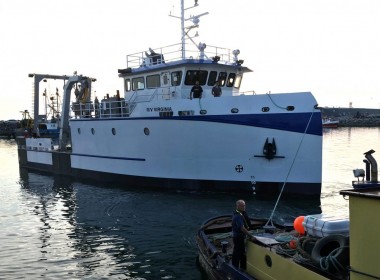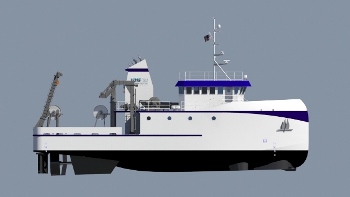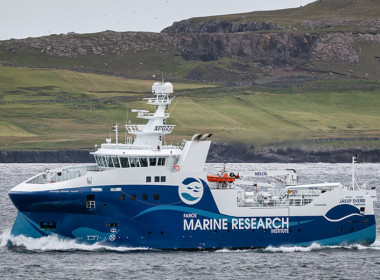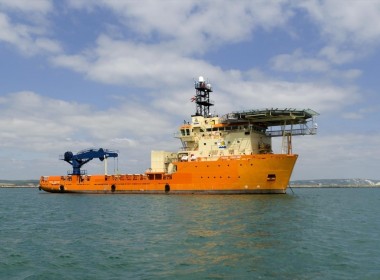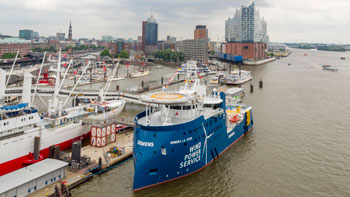VESSEL REVIEW | Tom Crean – Multi-disciplinary vessel enters service with Ireland’s Marine Institute

Spain’s Armon Shipyard has delivered a new research vessel ordered by the Marine Institute of Ireland.
Designed by Norwegian naval architecture firm Skipsteknisk, the Lloyd’s Register-classed Tom Crean will provide a year-round service for expanded fisheries surveys, seabed mapping, deep water surveys, and oceanographic and environmental research. The vessel will enable 300 operational days at sea each year and up to 3,000 scientist days per year.
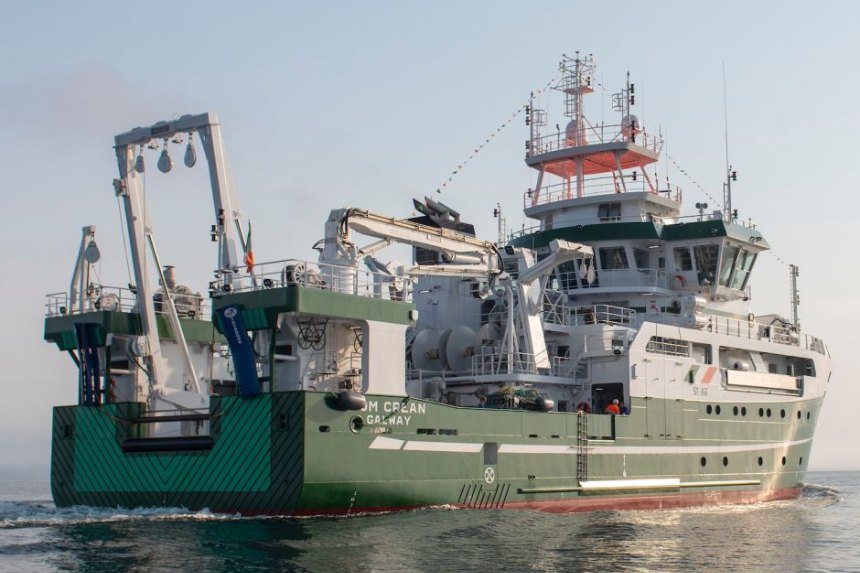
The new vessel’s namesake is a renowned Irish seaman and explorer who undertook three major expeditions to the Antarctic in the early years of the twentieth century. Crean volunteered for Sir Robert Falcon Scott’s Discovery expedition in 1901 and for his Terra Nova expedition in 1910. In 1914, Crean joined Sir Ernest Shackleton on the Endurance expedition.
Tom Crean has an LOA of 52.8 metres, a beam of 14 metres, a draught of 5.2 metres, accommodations for 12 crewmembers and 14 scientists, and a range of 8,000 nautical miles. The vessel also has a DP1 dynamic positioning system and capacity for three 20-foot containers.
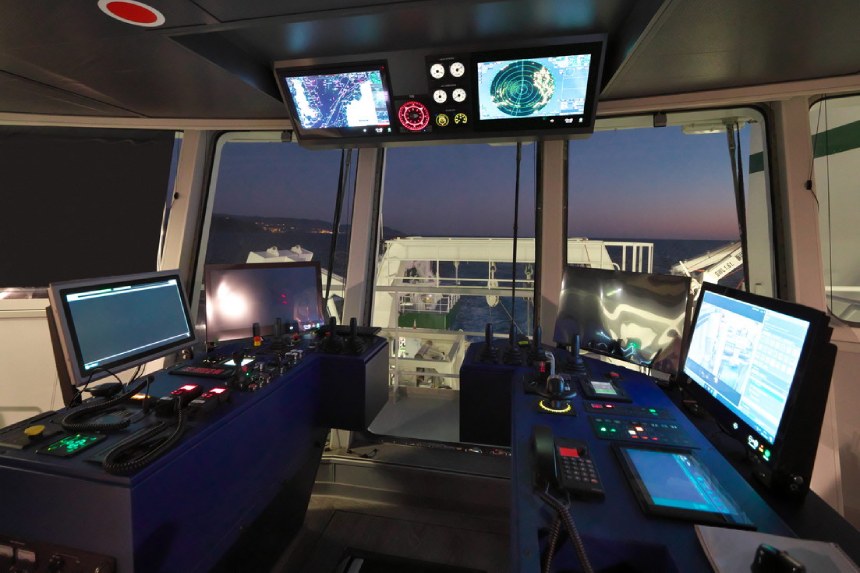
The vessel is designed to incorporate proven technologies to ensure that it operates as efficiently as possible, with reduced fuel consumption and environmental impact. It will be capable of near-silent operations throughout the Irish Exclusive Economic Zone (EEZ) and will be able to stay out at sea for 21 days at a time. The design therefore complies with the stringent criteria of the ICES 209 noise standard for fisheries research.
The wheelhouse provides full 360-degree visibility to also allow the bridge crew to oversee operations on the aft deck.
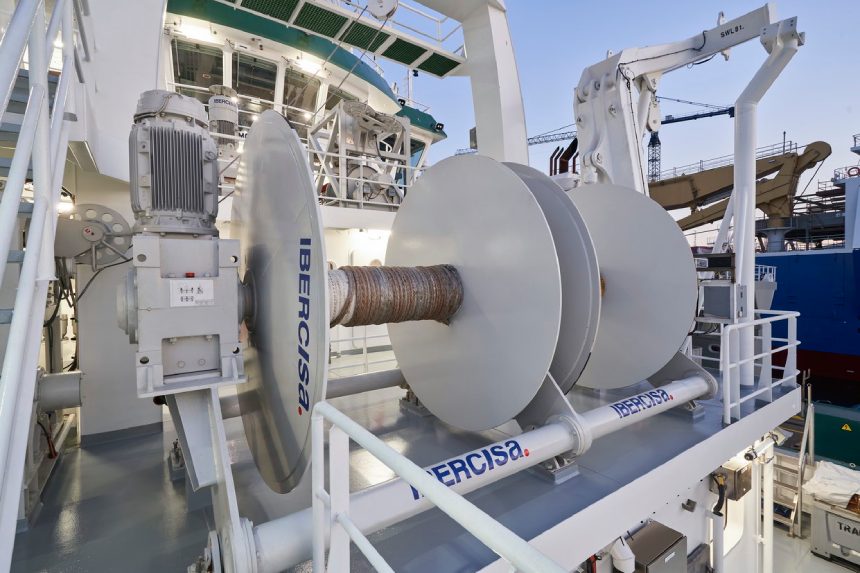
The propulsion arrangement includes two 1,350kW main engines and a 400kW auxiliary driving a 2,000kW motor. Lateral manoeuvring is aided by a 780kW bow thruster and a 400kW stern tunnel thruster.
The accommodation spaces include cabins, a lounge, a galley, a mess, a gym, and an onboard hospital. The deck machinery meanwhile includes Ibercisa winches and a stern A-frame.
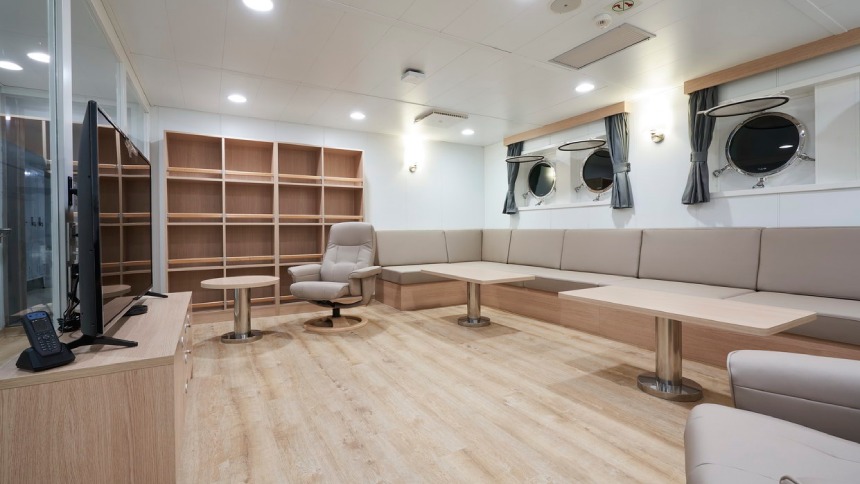
Based in Galway, the vessel will be used by the Marine Institute, other state agencies, and universities to undertake research and surveys. It will also maintain and deploy weather buoys, observational infrastructure, and the Marine Institute’s remotely operated vehicle (ROV) Holland I.
Tom Crean has since replaced Celtic Voyager, which came into service as a marine research vessel in 1997.
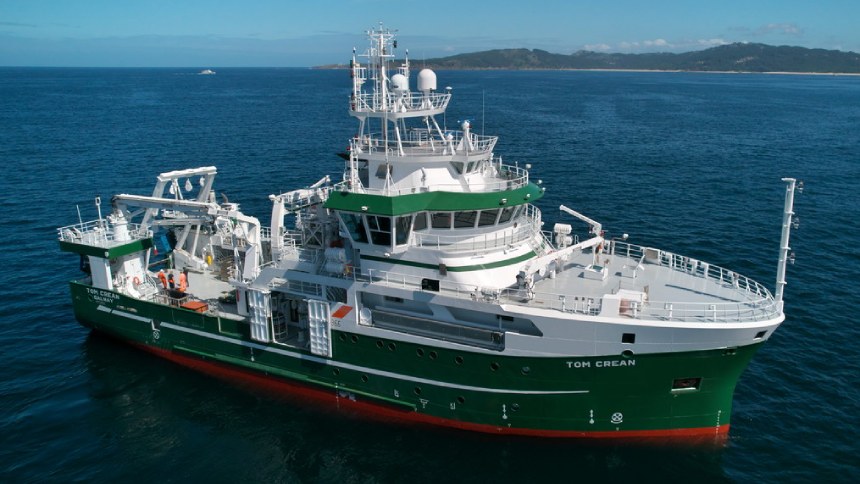
| Tom Crean | |
| SPECIFICATIONS | |
| Type of vessel: | Research vessel |
| Classification: | Lloyd’s Register |
| Flag: | Ireland |
| Owner: | Marine Institute, Ireland |
| Designer: | Skipsteknisk, Norway |
| Builder: | Armon Shipyard, Spain |
| Length overall: | 52.8 metres |
| Beam: | 14 metres |
| Draught: | 5.2 metres |
| Capacity: | 3 TEUs |
| Main engines: | 2 x 1,350 kW |
| Propulsion: | 2,000 kW |
| Auxiliary engine: | 400 kW |
| Side thrusters: | 780 kW; 400 kW |
| Range: | 8,000 nautical miles |
| Dynamic positioning: | DP1 |
| Winches: | Ibercisa |
| Accommodation: | Cabins; lounge; galley; mess; gym; hospital |
| Crew: | 26 |



